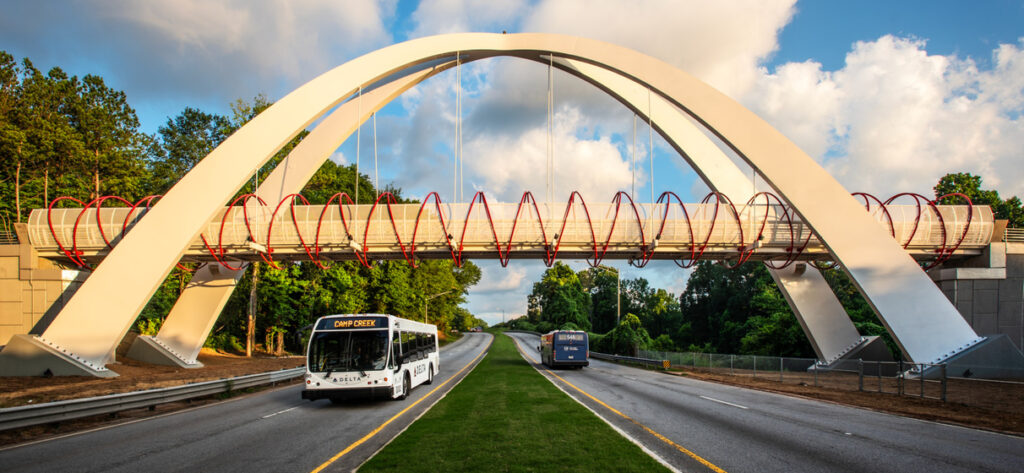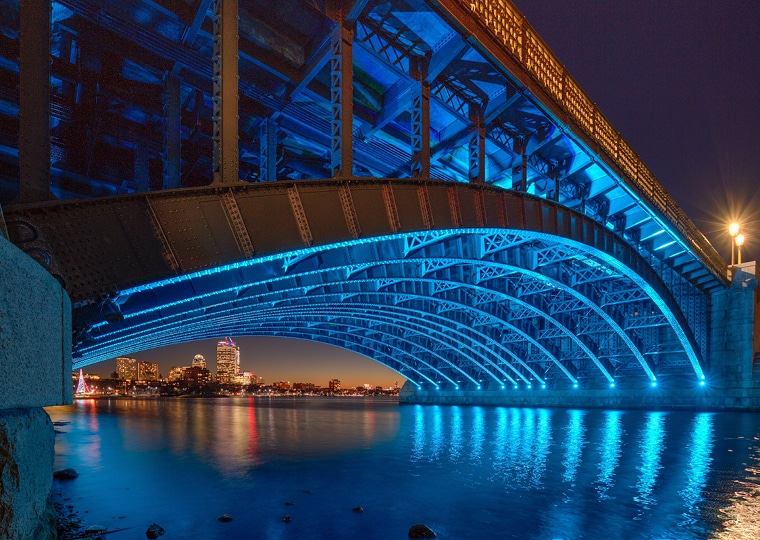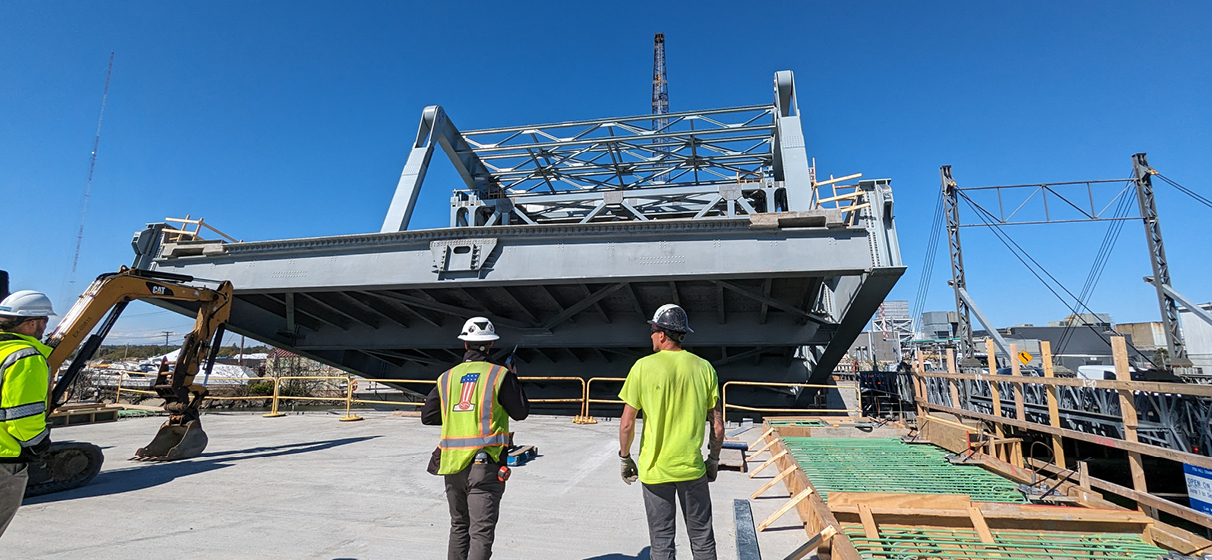When I first saw the concept for the Global Gateway Connector Bridge, I knew it would be different. While much of my work focuses on highway bridges, this project presented a unique opportunity to deliver something more sculptural – a true centerpiece for the City of College Park.
Located just steps from the world’s busiest airport, the bridge needed to make a statement while safely connecting pedestrians and cyclists between downtown College Park and the Georgia International Convention Center (GICC), across the busy Camp Creek Parkway.
Structurally, it’s a unique design, and it’s more intricate than it first appears. The 200-foot-long bridge is a hanger-supported through-arch, with an 80-foot-tall pair of steel arch ribs that intersect at the top. While it resembles a basket-handle arch, it’s actually two independent arches that cross through each other at midspan – a highly unusual configuration. From an aesthetic standpoint, that detail might not stand out to most people, but from an engineering and construction perspective, it added significant complexity. Analyzing and fabricating these intersecting arches required a completely different approach from a conventional basket-handle design. Each rib was fabricated from thick steel plates, requiring precision work from one of the few fabricators in the country capable of handling this level of complexity.

Erecting the arches was another feat entirely. When it came time to lift them into place, it took five cranes working in concert over a single weekend closure of Camp Creek Parkway to hold the pieces steady while welders worked 80 feet in the air to complete the connections. Seeing those arches come together after years of planning was one of the most rewarding moments of my career.
Beyond the structure itself, the bridge incorporates a range of custom architectural elements that set it apart. Red tubular hoops frame the deck along its entire length, and custom handrails flare outward in subtle ways that catch your eye without overwhelming the overall form. One of our design goals was to create a seamless, almost effortless appearance. Wherever possible, we concealed connection points and structural supports – whether by hiding how the hoops attach or ensuring that field welds between arch segments would be invisible once installed. The result is a bridge where users aren’t thinking about how it works; they’re simply experiencing it. But behind that apparent simplicity is a complex piece of engineering that I’m proud we were able to deliver.

What stands out most to me is the collaboration behind the bridge. From my STV colleagues to our design partners at Stratus (formerly Prime Engineering), our client, the City of College Park, inspectors at the Georgia Department of Transportation (GDOT), fabricators at King Fabrication, erectors at Banner Industrial and the construction team at C.W. Matthews, every part of this project was built on strong partnerships. Today, when I visit the site, I don’t only see a functional, beautiful piece of infrastructure – but also the collective effort that brought it to life.








